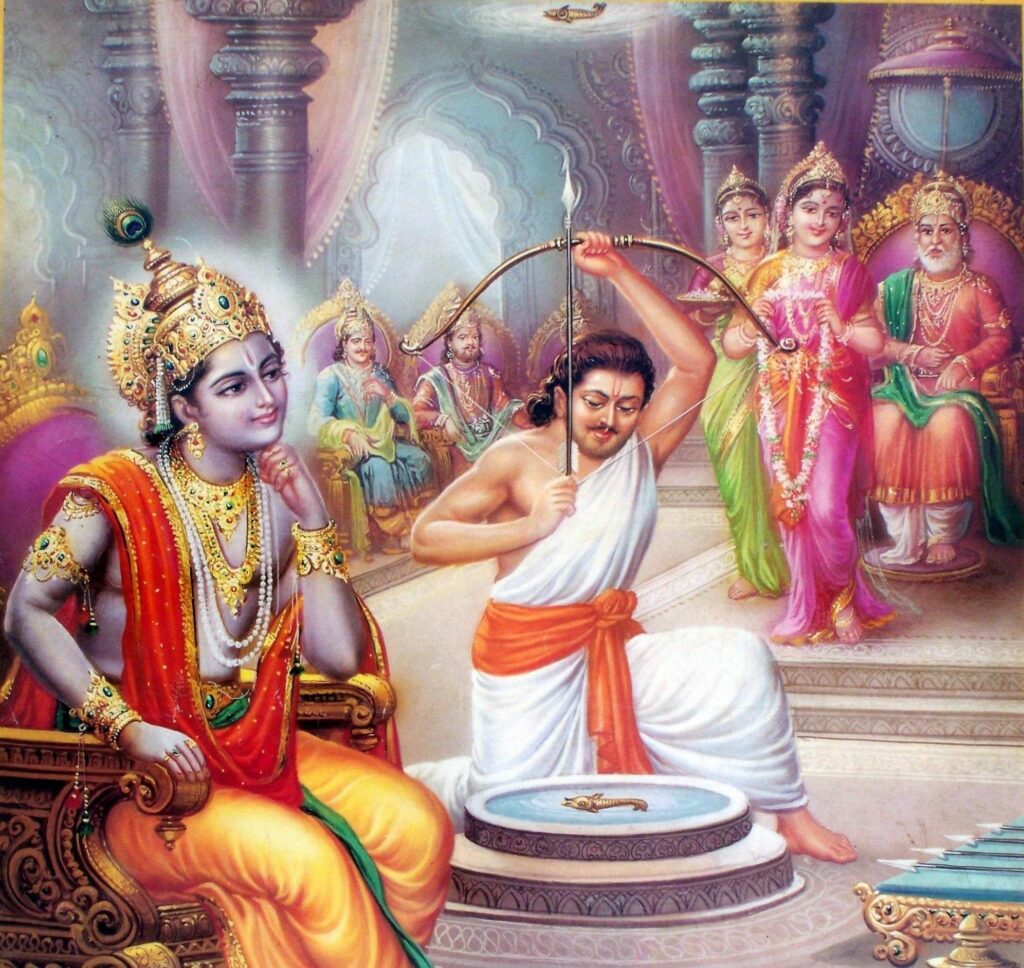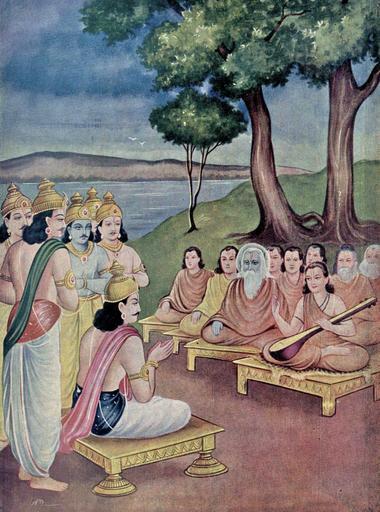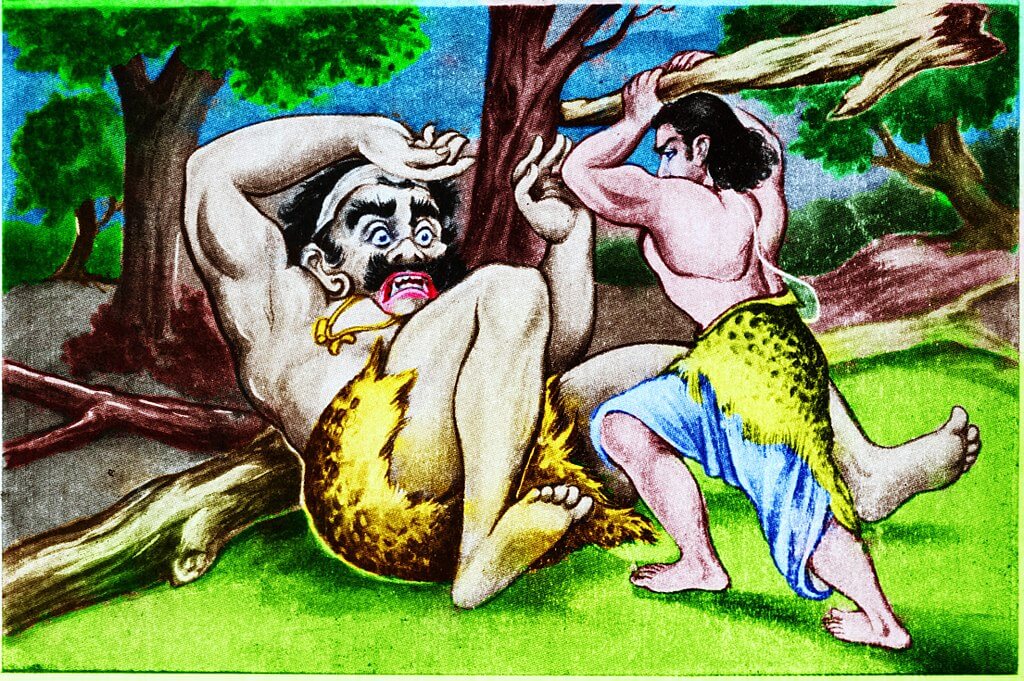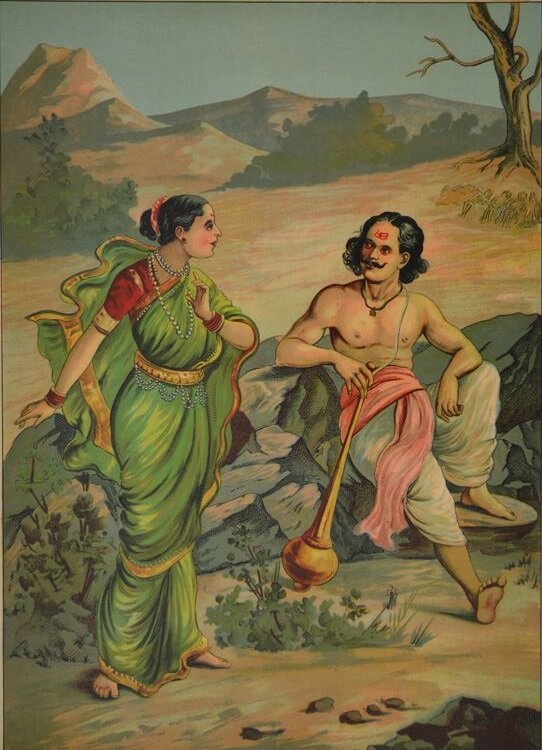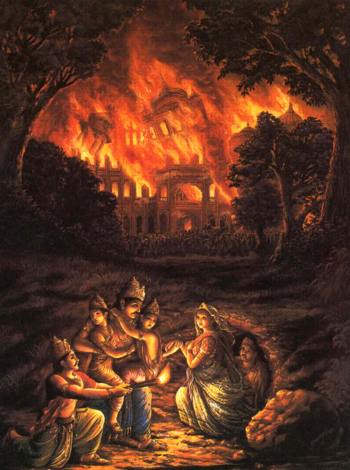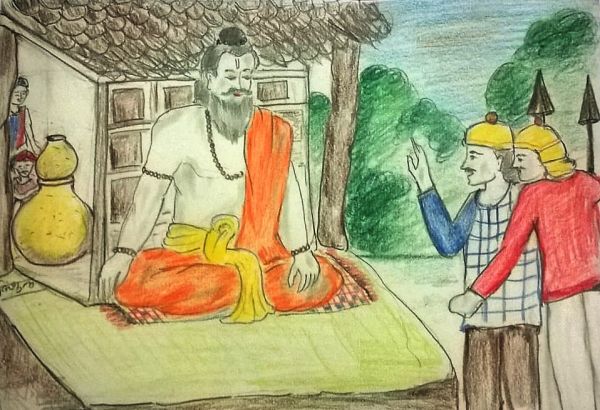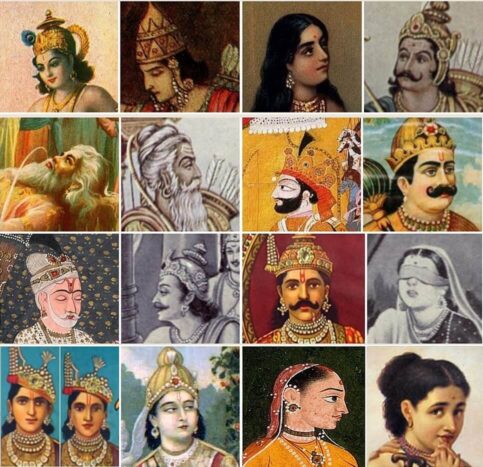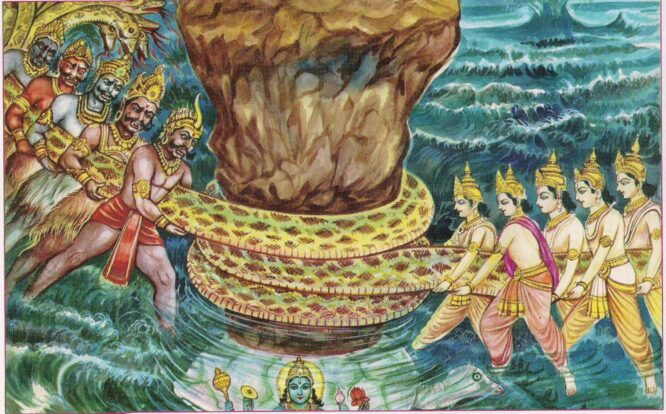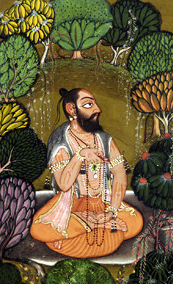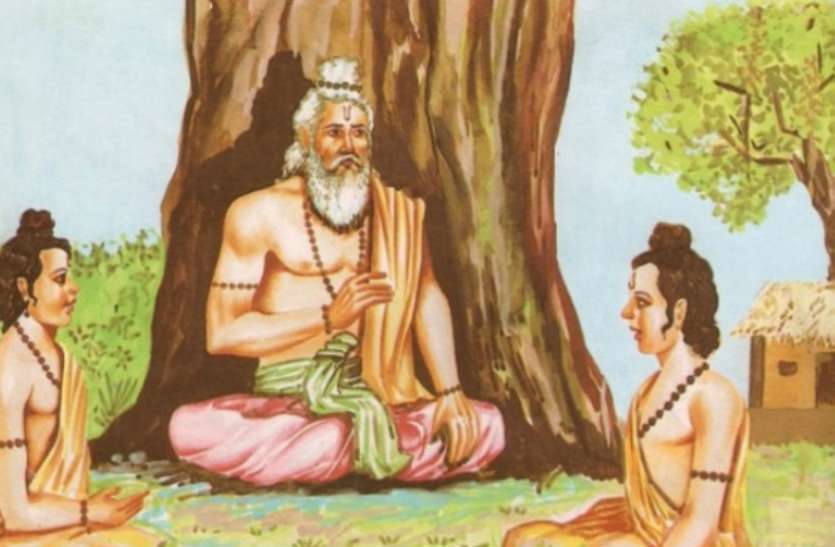Swayamvara Parva is the twelfth upa parva in the first maha parva, named as Adi parva, in the epic Mahabharata. Vyshampayana had narrated the historical events to Janamejaya, on his queries:
Where did the Pandavas halt for Draupadi swayamvara?
The five Pandava brothers with their mother Kunti had stayed in the house of a potter, in the capital of Panchala. They had dressed like Brahmin priests. On the day of the Draupadi swayamvara, all the five Pandava brothers, Yudhishtira, Bheema, Arjuna, Nakula and Sahadeva had moved to the palace of Drupada, disguised as Brahmin priests and walked along with other Brahmin priests and seated among working Brahmins.When they had left Kunti from the house of the potter, they told her to bring alms for her to eat that day’s food.
